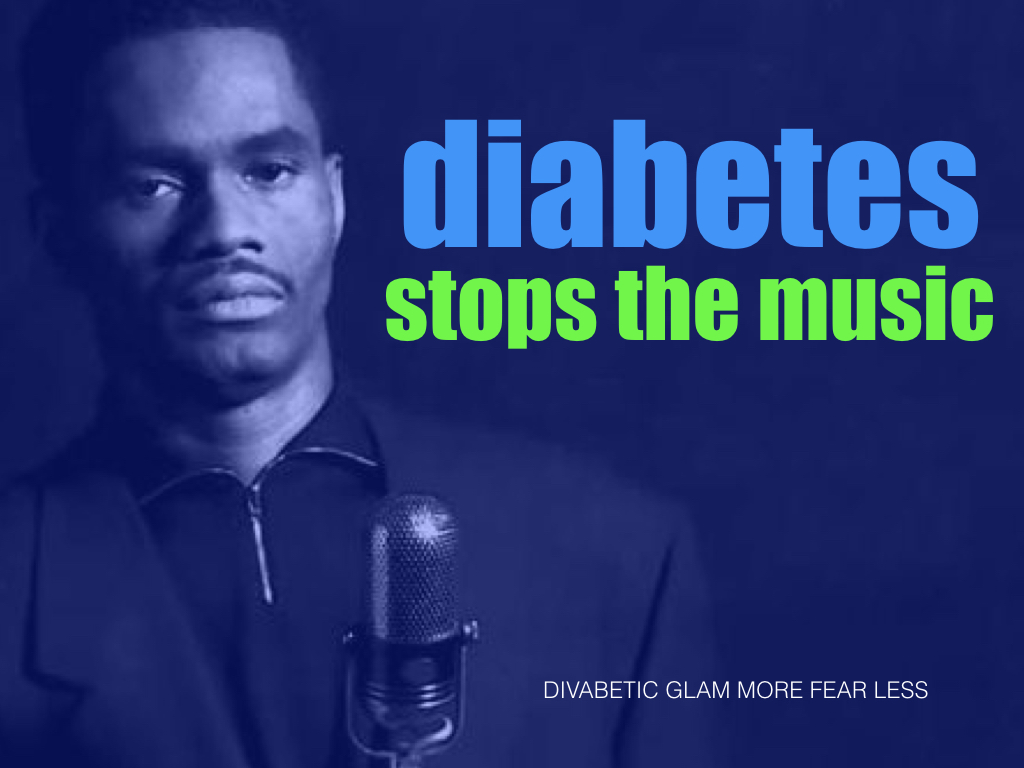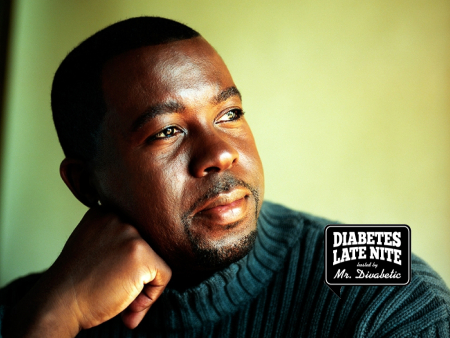Ever since last week’s Luther Vandross Tribute podcast I’ve been listening nonstop to Luther’s ballads and several other of the ‘Quiet Storm’ radio favorites. Songs like Anita Baker’s ‘Sweet Love’ , Meli‘sa Morgan’s ‘Do Me Baby’ and Luther’s ‘Dance with My Father’ are inspiring me to discuss the health risks related diabetes ‘after dark’.
Dead in Bed Syndrome (DIB) describes the sudden unexplained deaths of young people with type 1 diabetes. The syndrome is characterized as when someone with insulin dependent diabetes has gone to bed seemingly perfectly fine and has been found dead in an undisturbed bed.
Clinical reports strongly suggest that nocturnal hypoglycemia (which also occurs in people living with type 2 diabetes) is a likely prerequisite of the event, but that the death is sudden and probably caused by cardiac arrhythmia.
Nocturnal hypoglycemia is a low blood sugar that occurs overnight while you are asleep. It is common to sleep through a low blood sugar when it occurs during sleep.
You many be asking why doesn’t the person experiencing nocturnal hypoglycemia wake up?
There reason may be the phenomenon of hypoglycemic unawareness, which is defined as a hypoglycemic episode without warning symptoms of the decreasing blood glucose level. Most often, this is quite asymptomatic and the person does not wake up with hypoglycemic symptoms. Often the glucose value returns to normal or even high in the morning (so called Somogyi phenomenon) so this pattern is difficult to discover without taking nighttime tests every now and then
What can cause Nocturnal Hypoglycemia?
One cause could be taking the wrong type of insulin before going to bed. For example, if a large dose of bedtime insulin (not uncommon in puberty/prepuberty) is replaced with a similar dose of regular or rapid-acting insulin, this will lower the blood glucose considerably and could presumably trigger a severe hypoglycemic reaction which in turn could be further complicated by cardiac arrhythmia.
What can be done to avoid this from happening?
Checking your blood sugars before going to bed. Discuss with your health care provider a safe blood glucose target for bedtime. Many people feel comfortable if their blood glucose is at least 100 mg/dL before going to sleep.
If you use pen injectors, make sure the pen for your bedtime insulin looks and feels quite different from the one you use for daytime meal doses (not just another color that may be difficult to observe in the dark). If you use syringes and vials, store daytime and bedtime insulin in different places. When mixing insulin, be extra careful not to take the often higher bedtime dose of the wrong type.
If you like to exercise at night make sure to check your blood sugars before going to bed. Remember to decrease the bedtime dose after more strenuous exercise, especially if you do not exercise regularly.
If you have problems with nighttime hypoglycemia, ask your diabetes team for a continuous glucose monitoring device that may help you to detect nighttime glycemia patterns and help adjusting your insulin doses to avoid this.
Did you know that both legendary New York City disc jockey Vaughn Harper and Luther Vandross suffered strokes related to type 2 diabetes? Vaughn Harper was referred to as the architect of the Quiet Storm and Luther’s ‘House Is Not A Home’ was part of his blueprint by design.
The ‘Quiet Storm’, characterized by an enticing mix of unabashedly romantic songs, often fused with jazzy overtones, mellow dynamics, slow tempos, and relaxed rhythms.
We’re celebrating Luther Vandross, his musical legacy and raising awareness for diabetes health-related complications (such as stroke) on this Luther Vandross Tribute podcast.
In the years since Luther’s passing, one constant has remained to define his life and musical success: the voice. Like any great singer of the past 100 years, Luther Vandross’ voice and distinct singing style led to not only monumental success, but an instant recognition when you hear him singing–through your stereo, car radio, on TV or in a movie. Coupled with that voice was Luther’s unique ability to write and sing about love and the shared emotions we all feel in that search for and enjoyment of love. Through his songs, for the last two generations Luther Vandross became a staple in the most joyous moments of people’s lives.
Featured guests include Patricia Addie-Gentle RN, CDE, Luther percussionist Steve Kroon, Luther vocalists Tawatha Agee and Pat Lacy, Luther historian Leon Petrossian, members of ‘The Luther Re-Lives Experience’, friends and fans.
Throughout the podcast we will be featuring selected songs from the album entitled ‘Luther Vandross’ courtesy of SONY Music.







